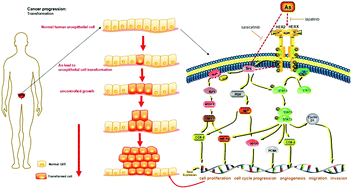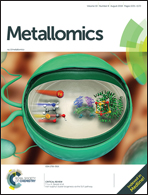HER2 and Src co-regulate proliferation, migration and transformation by downstream signaling pathways in arsenite-treated human uroepithelial cells
Abstract
Epidemiological studies have established a strong association between arsenic exposure in drinking water and an increased incidence of bladder cancer in arseniasis-endemic areas. Increased expression of HER2 has been observed in various types of human malignancies including bladder cancer. This study investigated the role of HER2 in arsenite-induced transformation of uroepithelial cells SV-HUC-1 and the role of Src family kinases in HER2 signaling. We found that the expression HER2 and Src were increased following chronic arsenite exposure in a time-dependent fashion. Chronic arsenite exposure also led to an upregulation of proliferation factors such as cyclin D1, COX2, PCNA, VEGF, and HIF-1α. Furthermore, Ras/Raf/MAPK, PI3K/AKT, and JAK2/STAT3 signaling pathways were activated by arsenite treatment. Importantly, these changes were inhibited by HER2 inhibitors and in HER2 knocked down cells. In addition, downregulation of HER2 inhibited cell growth and migration properties of arsenite-treated cells. Inhibition of Src also inhibits activation of signaling pathways and malignant transformation of cells. And we obtained evidence of an interaction between HER2 and Src in SV-HUC-1 cell lines. These results suggest that HER2 and Src may play an important role in arsenite-induced transformation by multiple downstream signals pathways.



 Please wait while we load your content...
Please wait while we load your content...